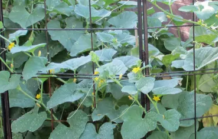
I know what you are thinking.no way, wrong season. But you’d be mistaken.
Now is the time to start thinking about your psychological need for color
when winter seems like it will never end. You know the feeling, it’s dreary
and cold outside and you just can’t wait for some green. As soon as you see
those first little leaves poking out of the ground, you can’t help but get
full of anticipation for the change of seasons. Every year you probably
think, I wish I had thought ahead to plant some bulbs last fall so I’d have
some of this color in my yard.
Right? Well, now is the time to do some thinking, planning, buying and
planting. Not just for the best selection and healthiest bulbs, but for your
mental and spiritual well being in six months! [This is a good selling point
for your spouse.or just me enabling your plant habit.] First of all, what
can you plant now (September to November-before the ground freezes) that
will emerge in the spring? From first appearance to last appearance we have
crocus, grape hyacinth (Muscari), daffodil, hyacinth and tulip. Before we
get carried away with the garden possibilities, it’s important to know a few
things about choosing, planting and caring for bulbs. For the best show
you’ll want to purchase the largest bulbs you can find that are appropriate
for that variety.
Healthy bulbs will be firm, have a thin, papery covering on the outside, be
free of bruises, mechanical damage and/or signs of mold or mildew.
Avoid bulbs with green tips peeking out since these plants are coming out of
dormancy too early. Follow the directions on the bulb package for planting
depth. They may benefit from some fertilizer and, like other plants, will
need a little water in the winter.
Technically a “corm” rather than a “bulb,” crocus are the first to bloom in
the spring and are sold alongside other spring-flowering bulbs in stores.
They are short little plants that range in color from dark blue, purple,
white, cream, yellow and orange. Grape hyacinths are hot on the tails of
crocus and complement them nicely with their bottle-brush heads in blues and
whites. Daffodils are next and come in many colors and petal types, most
often yellow and single, but there are plenty of really neat cultivars. They
are great for naturalizing (spread randomly around the garden and let them
grow at their own pace) and deer avoid them.
Hyacinth and tulip are among the last to put on a big show of early spring
color. As you know, the common oriental hyacinth is very fragrant. If you
aren’t able to plant any in the fall, there are always some in full bloom
available for impulse purchase near checkout lanes at the grocery store.
Indulge yourself, my friend.
Tulips come in many, many sizes and colors. I freely admit to being
overwhelmed by choice when it comes to tulips, but you can’t really go wrong
with them in the landscape. Just remember that they look amazing when massed
together for big swaths of color. Tulips require a long chilling period so
get them in the ground as soon as possible. They may also require more
frequent dividing in order to maintain large blooms in subsequent years. Or,
you can always replant with fun, new selections.
If you just don’t get around to planting any bulbs this year, never fear.
You can always purchase some in the spring for container gardens or forcing
indoors (hello January project). With a little planning ahead and working in
your yard (or containers) while it’s beautiful out this coming season, you
can enjoy a great show next spring. You’ll be so grateful that you got some
bulbs planted this fall-get to it!
By: Cheryl Boyer




